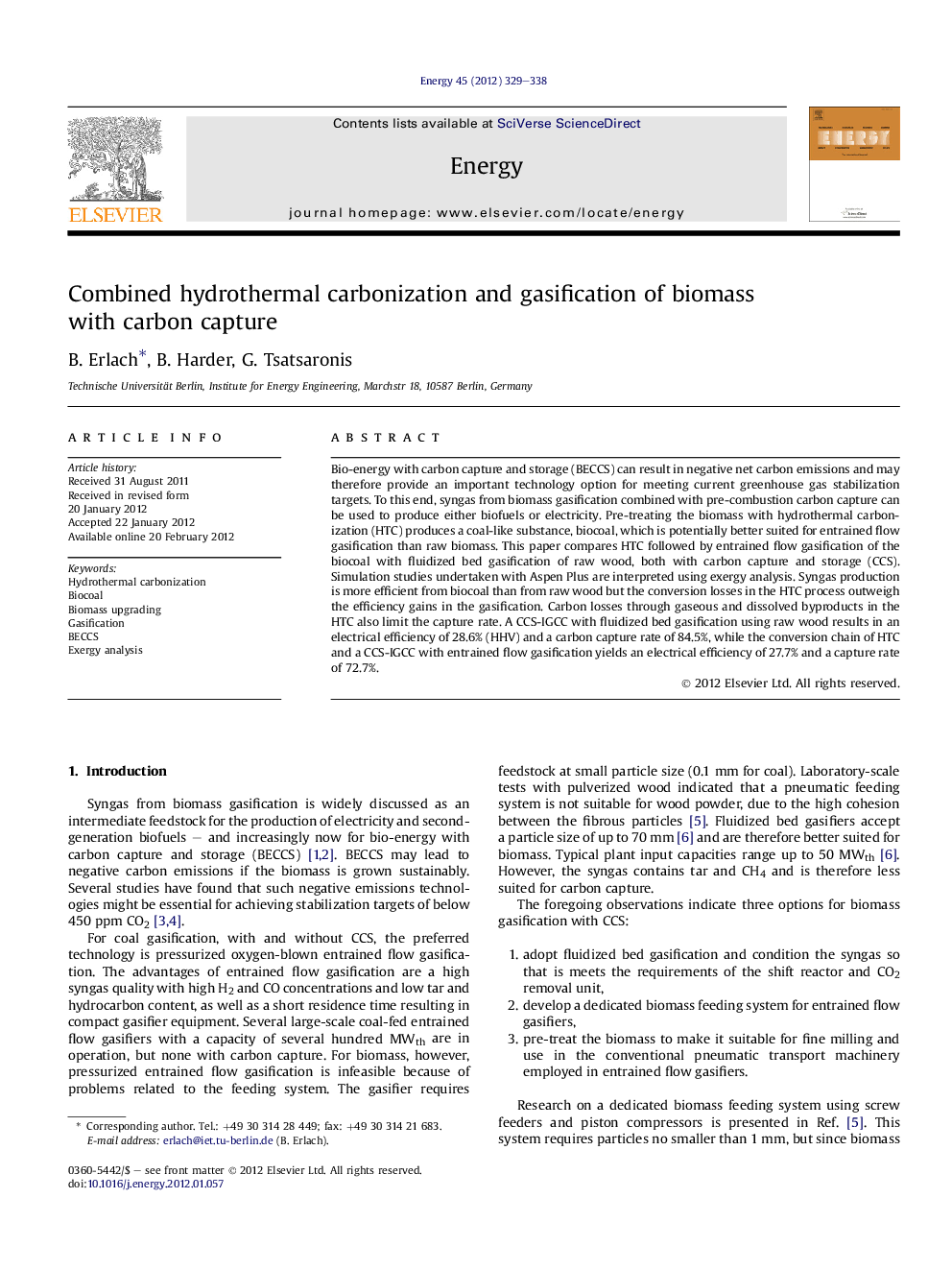| Article ID | Journal | Published Year | Pages | File Type |
|---|---|---|---|---|
| 1733677 | Energy | 2012 | 10 Pages |
Bio-energy with carbon capture and storage (BECCS) can result in negative net carbon emissions and may therefore provide an important technology option for meeting current greenhouse gas stabilization targets. To this end, syngas from biomass gasification combined with pre-combustion carbon capture can be used to produce either biofuels or electricity. Pre-treating the biomass with hydrothermal carbonization (HTC) produces a coal-like substance, biocoal, which is potentially better suited for entrained flow gasification than raw biomass. This paper compares HTC followed by entrained flow gasification of the biocoal with fluidized bed gasification of raw wood, both with carbon capture and storage (CCS). Simulation studies undertaken with Aspen Plus are interpreted using exergy analysis. Syngas production is more efficient from biocoal than from raw wood but the conversion losses in the HTC process outweigh the efficiency gains in the gasification. Carbon losses through gaseous and dissolved byproducts in the HTC also limit the capture rate. A CCS-IGCC with fluidized bed gasification using raw wood results in an electrical efficiency of 28.6% (HHV) and a carbon capture rate of 84.5%, while the conversion chain of HTC and a CCS-IGCC with entrained flow gasification yields an electrical efficiency of 27.7% and a capture rate of 72.7%.
► Hydrothermal carbonization (HTC) makes biomass suitable for entrained flow gasification. ► Simulation studies of HTC pre-treatment and biomass gasification with carbon capture. ► Conversion losses in HTC process outweigh efficiency gains in gasification. ► Carbon in dissolved and gaseous byproducts of HTC decreases carbon capture rate.
